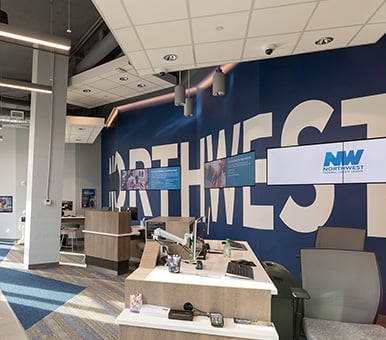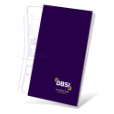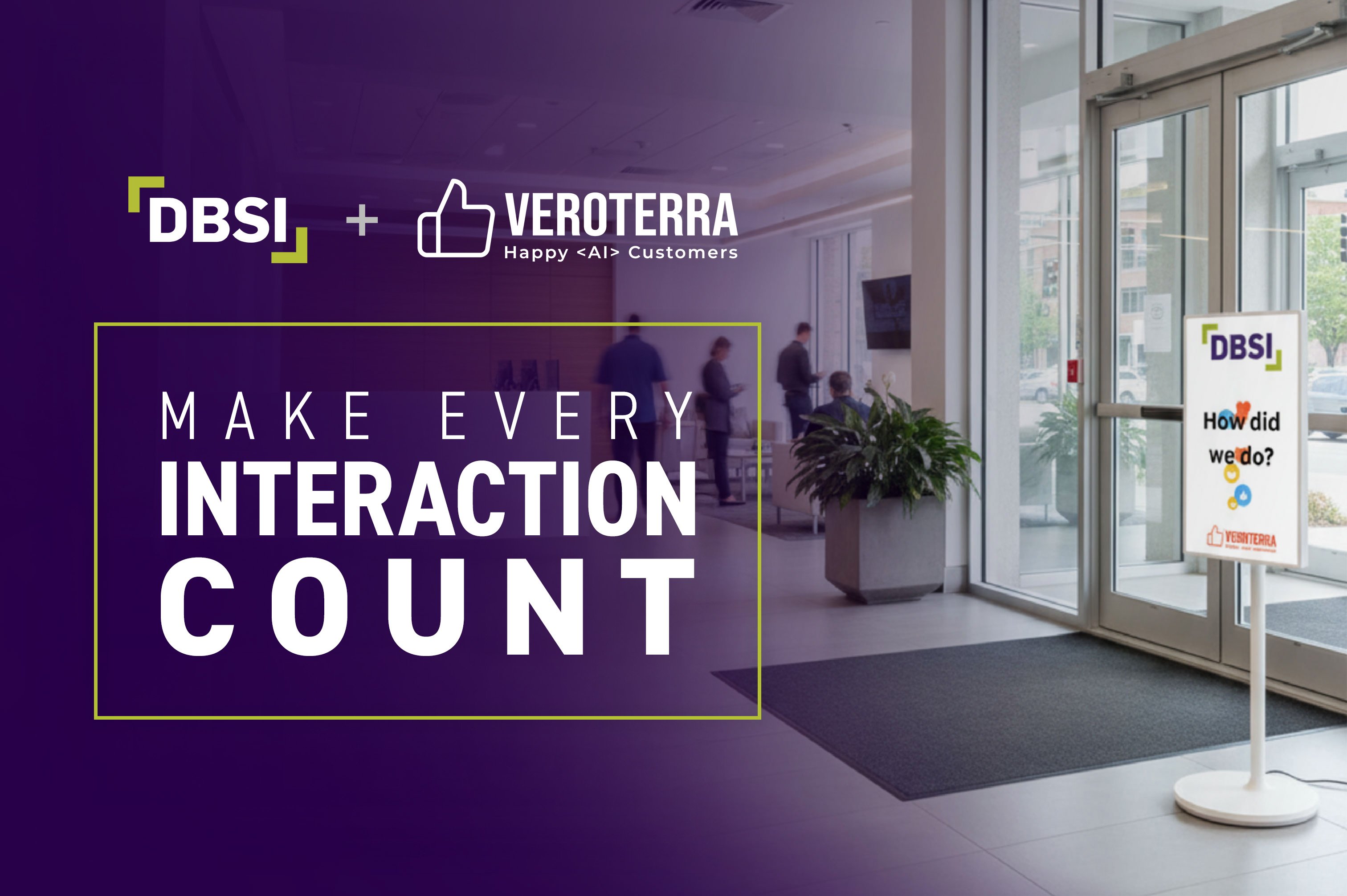.jpg)
Becoming compliant with the Americans with Disabilities Act (ADA) involves designing spaces in ways that encourage inclusion and deliver a positive brand message to clients, employees, and the public.
Regardless of scope and size, ensuring that a financial institution is accessible to everyone should be a non-negotiable part of any new construction or renovation.
But what does being inclusive really mean? And what goes in to building spaces compliant with ADA regulations?
The ADA and Financial Institutions, Explained
The Americans with Disabilities Act (ADA) is a federal law that prohibits discrimination against people with disabilities in relation to accessibility and civil rights. It was signed into law by President George Bush in 1990 and has been amended several times over the past few decades.
The ADA consists of four pillars: full participation, independent living, equality of opportunity, and economic self-sufficiency. The ADA is also divided into five titles of operation:
- Employment (Title I)
- Public Services (Title II)
- Public Accommodations (Title III)
- Telecommunications (Title IV)
- Miscellaneous (Title V)
Financial institutions must comply with ADA legislation found in Title III, which is the part of ADA legislation that applies to businesses classified as public accommodations, including banks and credit unions, schools, retail stores, restaurants, theaters, and other public-facing entities.
In regard to financial institutions, Title III means removing any physical barriers that prevent clients with disabilities from accessing banking-based services. Title I of the ADA means making reasonable accommodations for disabled employees so they can complete their work to the best of their abilities.
For more information on ADA Title III, please review the section Business That Are Open to the Public on the ADA website.
Financial Institutions and Why Inclusion is Important
Most of us know someone with a disability, whether they are a family member, friend, or colleague. The reality is, nearly one in four U.S. adults have a disability, and this ratio is projected to increase as our population ages.
No matter the numbers, financial institutions have a responsibility to make sure there are reasonable accommodations available for those with disabilities—physically, in the branch, and online.
So how are financial institutions doing as far as meeting ADA regulations? The reviews are mixed.
At least one third of disabled individuals responding to a 2022 study by the Financial Research Opportunities Group said that they didn’t feel welcome when visiting a physical branch location. Many respondents believed the reason for this feeling was that staff members weren’t trained properly in regard to managing client needs.
Even more alarming … 52% of the study’s respondents with mobility-based disabilities said they had issues physically accessing branch locations.
Accessibility issues tend to compound even more when those with disabilities cannot adequately access online banking services. To that end, a number of study respondents said they had problems ranging from fill-in form issues and trouble visualizing web pages to difficulty with passwords and problems completing CAPTCHAs.
These are just a few reasons why inclusion and ADA compliance are so important.
And here’s an additional thing to consider: Over 50% of disabled individuals responding to a survey by the Deloitte Center for Financial Services said they rely on their banks for financial information and advice, above all other sources.
Making a Financial Institution More Inclusive
Financial institutions play key roles in helping clients with disabilities improve their financial well-being, and in this section, you will learn some ways that can be accomplished.
Remove All Physical Barriers
Removing physical barriers is significant for those who need to access in-person and online banking services. Here are examples of some in-branch requirements under Title III:
- Make entrances, exits, entryways, and passages easily accessible and wide enough for wheelchairs to pass through.
- Install counters and tables at heights compliant with ADA requirements.
- Maintain a website and online presence accessible to those with disabilities.
- Provide self-service machines designed for ease-of-use and develop spaces around them wide enough to accommodate clients, visitors, and employees who use wheelchairs and other mobility aids.
For further guidance, refer to the 2010 ADA Standards for Accessible Design | ADA.gov. These standards “set minimum requirements—both scoping and technical—for newly designed and constructed or altered State and local government facilities, public accommodations, and commercial facilities to be readily accessible to and usable by individuals with disabilities.”
Beyond the required modifications under Title III, financial institutions can begin to utilize assistive technologies like artificial intelligence (AI), augmented.jpg?width=700&height=467&name=DSC02609_3%20(3).jpg) reality (AR), and virtual reality (VR) to assist individuals with disabilities.
reality (AR), and virtual reality (VR) to assist individuals with disabilities.
Train Staff How to Accommodate All Types of Disabilities
There’s enough researched-based evidence about disabled individuals feeling unwelcome inside branches that warrants regular staff training. Teaching staff how to properly deliver products and services in addition to training on diversity, biases, and empathy are good places to start.
It’s also important to include training on how to accompany employees with disabilities in the workplace, as they too require reasonable accommodations and civil rights protections per ADA standards.
Provide Financial Literacy Programs
Because many individuals with disabilities rely on their financial institutions for information and advice, creating and delivering financial literacy programs to enhance financial knowledge can help them feel more welcome and confident when entering the branch, contacting customer service by phone, and using online and mobile banking.
It’s also worth noting that through the Community Reinvestment Act (CRA), a financial institution can receive CRA credit for offering financial literacy and counseling services to individuals with disabilities.
Follow Web Content Accessibility Guidelines (WCAG)
Almost 80% of people with disabilities who responded to a study by the Financial Research Opportunities Group stated that they were using mobile or internet banking at least once per month. That said, having an ADA-compliant online presence is vital to delivering adequate service to those with disabilities and avoiding litigation.
The Web Content Accessibility Guidelines (WCAG) were first established as WCAG 1.0 in 1999 and they provide recommendations for making web content more accessible. The most current version of these recommendations is WCAG 2.1, released in August 2023.
Conforming to WCAG guidelines involves a number of practices such as adding captions to videos, adding text alternatives for images, and ensuring online documents are accessible to all.
Build a More Inclusive Branch With DBSI
As a top design-build partner with financial institutions across the U.S., we at DBSI are experts at assisting banks and credit unions become more inclusive with everyone they serve.
From engineering the most up-to-date design concepts and hardware technologies to implementing digital signage and employee training initiatives, we are here to help you build and transform your branch network. For more information, please fill out our online form here.
Together, let's bring the vision for your future to life!



































 Corde Kurtz
Corde Kurtz
-1.png)
-4.png)
